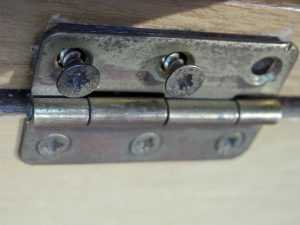
Hinges are designed with openings so that they can be installed on doors, cabinets, vehicles, machines and other surfaces. Whether it’s a barrel, piano, flag or living hinge, all hinges have multiple openings. Consisting of open passages, they support the use of fasteners. You can install a hinge by driving fasteners through its holes and into the underlying surface. There are several different types of hinge openings, however, each of which features a unique design.
Round
The most common type of hinge opening is round. As shown in the adjacent photo, round openings consist of circular holes. They are typically used with screws. Most screws have a circular head, so they can be used to install hinges with round openings.
Square
In addition to round, square is a common type of hinge opening. Square openings, of course, consist of square-shaped holes. They are typically used with square-head bolts. While screws typically have a circular head, bolts are available in several head types, including square. Square-head bolts are also known as lag bolts or lag screws. You can use them to install hinges with square openings. The square-shaped head of a lag bolt or lag screw will stop at the top of the square opening, allowing for a proper fit.
Rectangular
There are also rectangular hinge openings. Rectangular openings are also known as rectangular slots. They are designed to allow the respective hinge to move after being installed on a given surface. With other types of openings, the hinge will become static after being installed. You can’t move or otherwise adjust the position of a hinge if it has round or square openings — at least not without removing the fasteners. Rectangular openings offer a solution. After installing a hinge with rectangular openings, you can move it laterally. Just loosen the fasteners, after which you can move the hinge. After finding the perfect position, you can then retighten the hinge to secure it in place.
Countersunk
It’s important to note that some hinges are designed with countersunk openings. A countersunk opening is a canonical hole that becomes narrower towards the bottom. Whether a hinge has round, square or even rectangular openings, they may be countersunk as well. Countersunk holes allow fasteners to sink into the hinge. With countersunk holes, fasteners will become flush with the hinge. The fastener’s head will sink into the countersunk hole, after which it will stop so that it becomes flush with the hinge.
